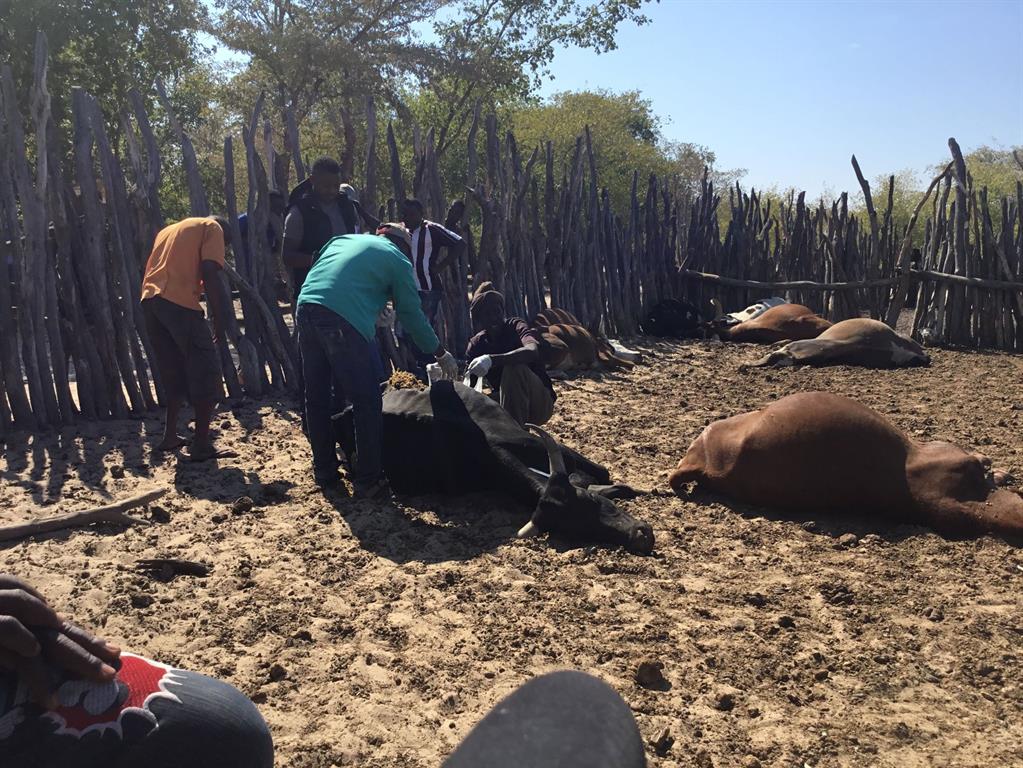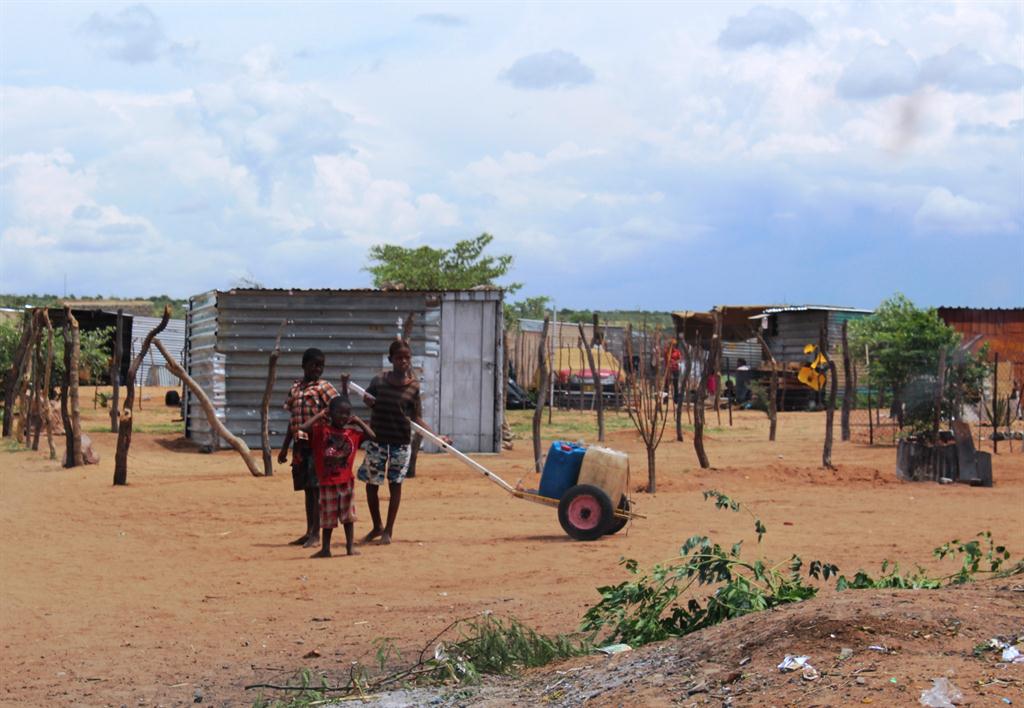Hepatitis E: New infections double
The World Health Organisation says national and regional authorities need to step up efforts.
The World Health Organisation (WHO) raised concerns this week following a sharp spike in new hepatitis E infections in June, and issued a cautionary note for efforts to be stepped up to end the nearly two-year outbreak, which has infected more than
5 400 Namibians and killed 45.
After only 56 new hepatitis E infections were reported between 20 May and 2 June, the health ministry's latest situation report on the outbreak confirmed this number doubled to 113 new infections between 3 and 16 June.
In response, the WHO weekly bulletin on public health emergencies and outbreaks in Africa, issued on Monday, lists the challenges hampering efforts to bring the more than 20-month outbreak under control.
Issued by the WHO health emergencies programme, the report warns that “national and regional authorities need to step up efforts to address these challenges and implement proven public health activities that will bring this outbreak to a close”.
The report states that the “apparent increasing trend in the hepatitis E virus (HEV) cases in Namibia in the past few weeks is of concern, particularly in light of the deepening drought in the region, which is likely to compromise community water supplies further still”.
The bulletin highlights that the hepatitis E outbreak in Namibia, which began in September 2017, “has become protracted and has spread geographically”.
Namibia appears to be the first country to experience a nationwide outbreak of hepatitis E and the length of the outbreak has also surpassed the average of 18 months, experts noted.
Among the challenges identified by the response teams on the ground are “suboptimal coordination of the outbreak response at all levels, inadequate safe water, sanitation and hygiene interventions and sanitation facilities in the areas impacted by the outbreak, mostly informal settlements”.
Other challenges include inadequate risk communication strategies, and a lack of staff to support surveillance and data management at national level.
Worrying
The total number of confirmed HEV cases has now reached 5 423, up from 5 309 at the start of June.
The health ministry confirmed that of the 113 new cases, the majority were reported in the Khomas Region (60), followed by 17 new cases in Erongo's informal settlements, eight new cases in Omusati, six new cases in Omaheke, while one new case each was reported in the Oshana, Ohangwena and Kavango regions between 3 and 16 June. The outbreak has affected mostly residents of informal settlements where access to safe water, sanitation and hygiene is limited, including potable water, latrines and hand-washing facilities.
The hardest hit informal settlements are Havana and Goreangab in Windhoek, and the DRC informal settlement in Swakopmund.
In the Khomas Region, 3 529 persons have been infected, while 1 267 confirmed cases have been reported in Erongo.
The remaining regions account for 12% of all cases.
Breaking the chain
A total of 37 cases of hepatitis A were reported in Omusati this year and are “presumed to be an outbreak”, according to the latest situation report.
Hepatitis E and -A are both transmitted through the faecal-oral route or via contaminated food and water, and occur in areas with poor sanitation.
“We need to break the chain of transmission. We haven't broken it yet,” Dr Bernard Haufiku, who heads the national health emergency management committee in response to the outbreak, told Namibian Sun last month.
He underlined that hepatitis E, and now hepatitis A, “far from being only a health issue, is a socioeconomic issue” related to poverty, unemployment, poor hygiene and other struggles faced by communities living in the country's poorest and unserviced informal settlements.
He stressed outbreaks begin “with sanitation, water provision and personal hygiene”.
“And it will end with us addressing those three challenges. Those are the three fundamental challenges we are facing.”
JANA-MARI SMITH
5 400 Namibians and killed 45.
After only 56 new hepatitis E infections were reported between 20 May and 2 June, the health ministry's latest situation report on the outbreak confirmed this number doubled to 113 new infections between 3 and 16 June.
In response, the WHO weekly bulletin on public health emergencies and outbreaks in Africa, issued on Monday, lists the challenges hampering efforts to bring the more than 20-month outbreak under control.
Issued by the WHO health emergencies programme, the report warns that “national and regional authorities need to step up efforts to address these challenges and implement proven public health activities that will bring this outbreak to a close”.
The report states that the “apparent increasing trend in the hepatitis E virus (HEV) cases in Namibia in the past few weeks is of concern, particularly in light of the deepening drought in the region, which is likely to compromise community water supplies further still”.
The bulletin highlights that the hepatitis E outbreak in Namibia, which began in September 2017, “has become protracted and has spread geographically”.
Namibia appears to be the first country to experience a nationwide outbreak of hepatitis E and the length of the outbreak has also surpassed the average of 18 months, experts noted.
Among the challenges identified by the response teams on the ground are “suboptimal coordination of the outbreak response at all levels, inadequate safe water, sanitation and hygiene interventions and sanitation facilities in the areas impacted by the outbreak, mostly informal settlements”.
Other challenges include inadequate risk communication strategies, and a lack of staff to support surveillance and data management at national level.
Worrying
The total number of confirmed HEV cases has now reached 5 423, up from 5 309 at the start of June.
The health ministry confirmed that of the 113 new cases, the majority were reported in the Khomas Region (60), followed by 17 new cases in Erongo's informal settlements, eight new cases in Omusati, six new cases in Omaheke, while one new case each was reported in the Oshana, Ohangwena and Kavango regions between 3 and 16 June. The outbreak has affected mostly residents of informal settlements where access to safe water, sanitation and hygiene is limited, including potable water, latrines and hand-washing facilities.
The hardest hit informal settlements are Havana and Goreangab in Windhoek, and the DRC informal settlement in Swakopmund.
In the Khomas Region, 3 529 persons have been infected, while 1 267 confirmed cases have been reported in Erongo.
The remaining regions account for 12% of all cases.
Breaking the chain
A total of 37 cases of hepatitis A were reported in Omusati this year and are “presumed to be an outbreak”, according to the latest situation report.
Hepatitis E and -A are both transmitted through the faecal-oral route or via contaminated food and water, and occur in areas with poor sanitation.
“We need to break the chain of transmission. We haven't broken it yet,” Dr Bernard Haufiku, who heads the national health emergency management committee in response to the outbreak, told Namibian Sun last month.
He underlined that hepatitis E, and now hepatitis A, “far from being only a health issue, is a socioeconomic issue” related to poverty, unemployment, poor hygiene and other struggles faced by communities living in the country's poorest and unserviced informal settlements.
He stressed outbreaks begin “with sanitation, water provision and personal hygiene”.
“And it will end with us addressing those three challenges. Those are the three fundamental challenges we are facing.”
JANA-MARI SMITH





Comments
Namibian Sun
No comments have been left on this article